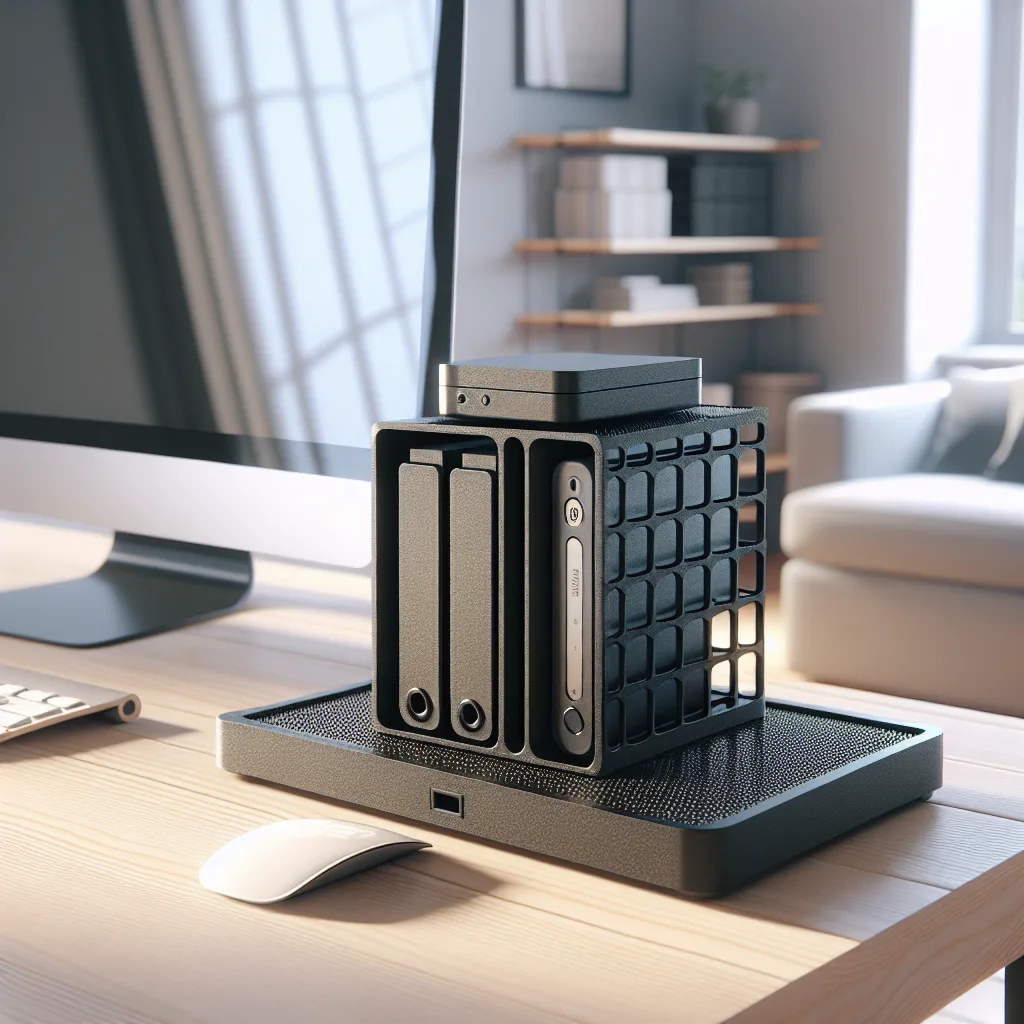It’s a common scene. You scroll through amazing pictures of home labs—towers of servers, blinking lights, and perfectly managed cables all nestled into impressive racks. It’s inspiring stuff. But what if your “lab” is a bit more… humble?
Maybe, like me, you’re starting with just a small desktop computer and an external hard drive. My own setup began with an Optiplex Micro and a single Seagate drive. It’s not much, but it’s a start. It’s my start.
When I first got my 3D printer, my immediate thought was to create a neat, tidy home for my mini-setup. A small rack. Something to lift the components off the desk, give them some air, and make it feel a little more intentional.
So I started searching. And I found… well, I found a lot for the big guys.
The Search for the “Micro” Rack
I looked on Thingiverse, Printables, and all the usual spots. I searched for “homelab rack,” “server rack,” and “3D printed rack.” The results were incredible, but they were all for full-sized servers, complex network switches, and clusters of Raspberry Pis. It felt like trying to find a bicycle rack and only getting designs for a multi-story car park.
Everything was geared toward these decked-out, super impressive homelabs. It was a little discouraging. Was I the only one out there with a setup that didn’t require a 19-inch rack? Was my mini-lab not worthy of its own custom-printed home?
I realized I was probably just using the wrong words. The community for massive homelabs is vocal and visible, so it dominates the search results. But the world of “micro-labs” is out there. You just have to know how to find it.
Finding Your Niche: The Right Search Terms
After a lot of trial and error, I stumbled upon a few search terms that started giving me the results I was looking for. If you’re in the same boat, try these out:
- “Mini Rack” or “Micro Rack”: This is the most obvious one, but combining it with your device name is key. For example, “Optiplex Micro rack” or “NUC rack.”
- “Stacking Stand” or “Device Stand”: Sometimes, what you’re looking for isn’t called a “rack” at all. A simple stand that can hold your mini PC and a hard drive on top is often labeled as a “stacking stand.”
- “Vertical Stand”: This is a great one. Many designs orient your computer and drive vertically to save desk space. Searching for “Optiplex vertical stand” might give you exactly what you need.
- “Component Shelf”: A more generic term, but sometimes you’ll find modular, printable shelves that you can adapt to your needs.
It turns out there isn’t one magic word. It’s more about describing what you have, not what you aspire to. Forget “homelab” for a second and just search for a stand for your specific little computer.
Sometimes, You Have to Make It Yourself
Here’s the other thing I learned: sometimes the perfect thing doesn’t exist. And that’s actually the best part about having a 3D printer.
You don’t have to be a CAD expert to get started. Tools like Tinkercad are incredibly easy to learn. You can start with basic shapes. Measure your Optiplex Micro. Measure your hard drive. Then, create simple, blocky holders for each.
My first design was literally just two rectangles with lips on the front to keep the devices from sliding off. It wasn’t pretty, but it was functional. It got my hardware off the desk and gave it some breathing room. And it was mine. I made it.
The beauty of a small setup is its simplicity. You don’t need complex airflow designs or heavy-duty brackets. You just need something that holds your gear.
Your Lab is Your Lab
It’s easy to feel like your small setup isn’t a “real” homelab. But it is. A homelab is about learning, experimenting, and building something that works for you. It doesn’t matter if it’s a single Raspberry Pi or a full rack of enterprise gear.
So if you’re just starting out, don’t get discouraged by the giant setups. Your mini-lab is the perfect place to begin. And with a 3D printer, you have the power to create a custom home for it that’s exactly the right size.
Start small. Search smart. And if you can’t find it, build it. Your homelab journey is your own, and it starts right where you are.
